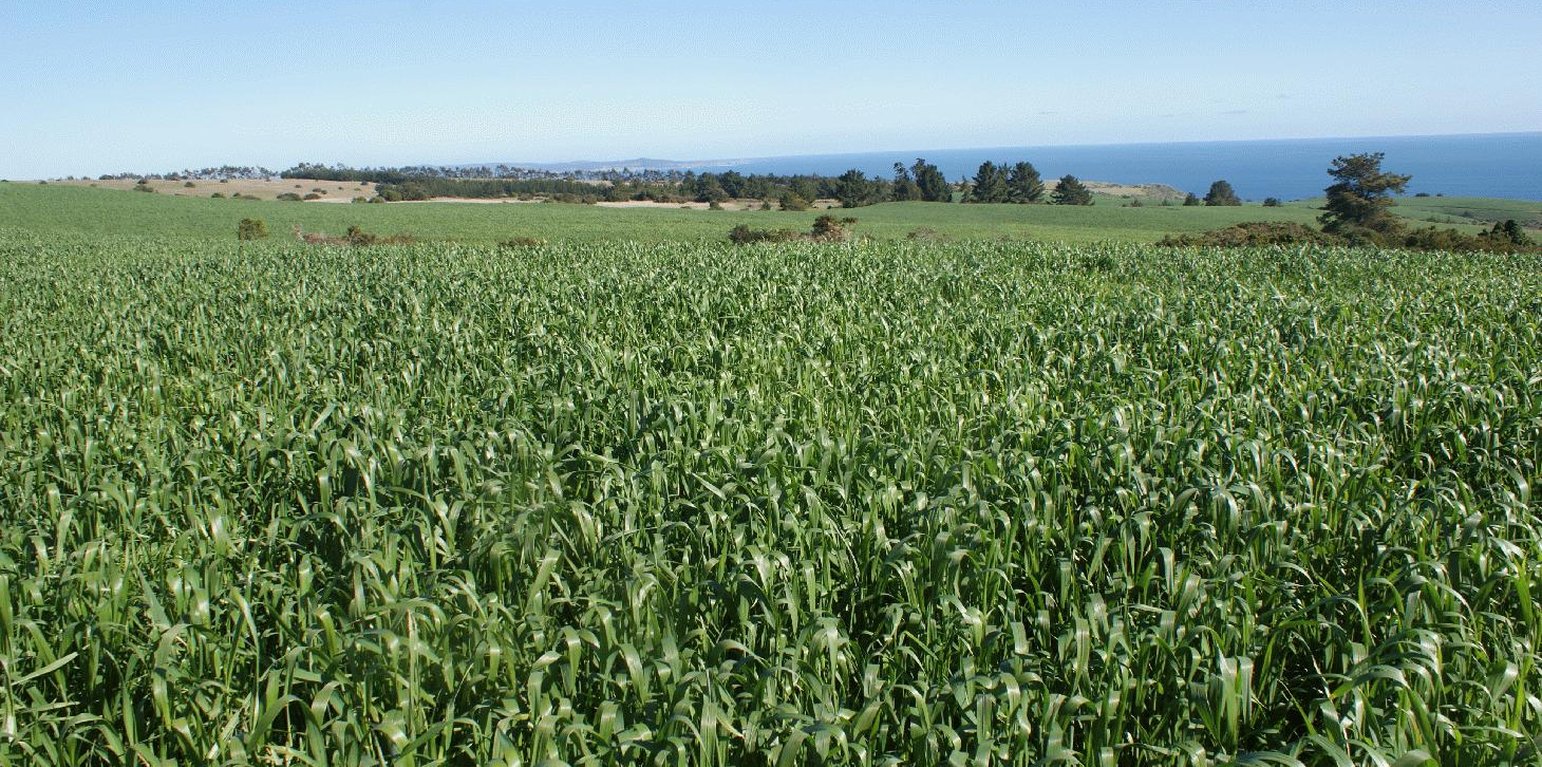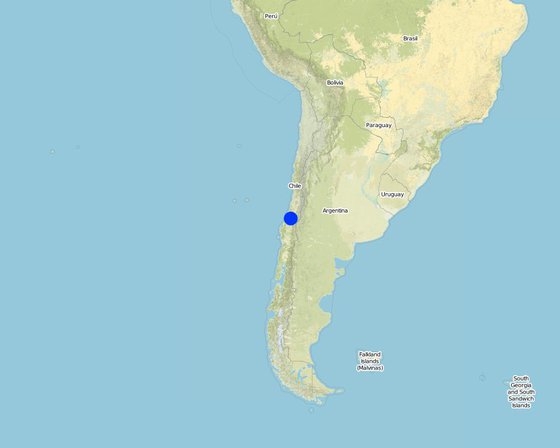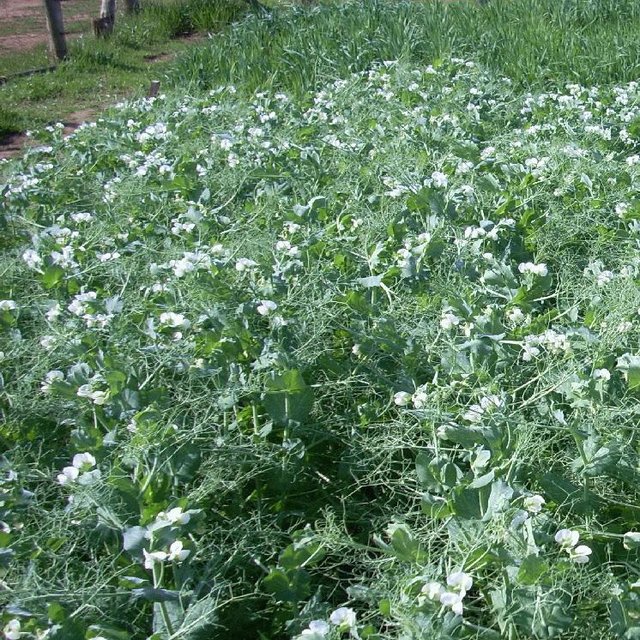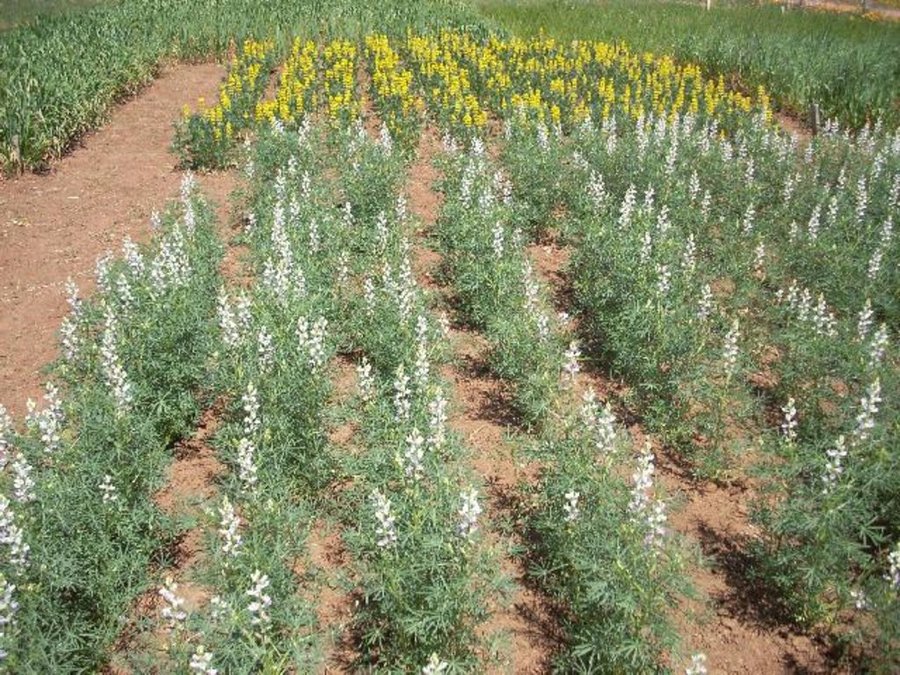



In the past, legumes were commonly used as a biological and economic source of N for farming systems. Nowadays, N-fixing legumes have been recovering as viable crops because of the increased cost of N fertilizer and the need to develop more sustainable farming systems.
Purpose of the Technology: These systems combine phases of legumes of different duration, in which N is fixed and accumulates in the soil, followed by phases of cereal growing during which accumulated N is extracted
Establishment / maintenance activities and inputs: In this new rotation for rainfed agricultural systems in Central Chile, four legume-wheat rotations were compared to a monoculture crop rotation (wheat followed by oat). The legume species are: the narrow-leaf lupin (Lupinus angustifolium); Wonga (early-flowering and high-yielding narrow-leafed lupin variety), yellow lupin (Lupinus luteus); Motiv, Peas (Pisum sativum); Rocket and a fodder mixture of vetch (Vicia atropurpurea) with oats. Legume seeds were inoculated with a specific Rhizobium. In the year following the legume crop, wheat was seeded without N fertilisation on the incorporated residues of grain legumes and green manure (vetch with oats). The BNF in the grain legumes varies from 124 to 178 kg N ha-1, depending on the type of legume. Peas are the most efficient fixing legume crop. In the lupins - wheat (L. angustifolius) rotation without application of N to the wheat after lupins, production of wheat was between 79 and 110% of that when fertilised with N. In the peas - wheat rotation, a yield equivalent to 72 and 105% of the wheat fully fertilised with N was obtained. While peas (Pisum sativum) can be eaten as a green vegetable, lupins and Vicia are used as fodder supplements for animals.
Natural / human environment: The new rotations were developed and evaluated experimentally. Then, through a technology transfer programme, the technology was transferred to real conditions with farmers in a programme covering 250 ha in the municipality of Yumbel.
The area has a subhumid Mediterranean climate with an average annual precipitation of 695 mm (80% concentrated in winter), with five months of drought. Soils are Alfisols of the Cauquenes type, classified as Ultic Palexeralfs. The soil is formed from weathered granite with moderately acidic conditions and low organic carbon. Clay content in the soil is 15% at depths of 0-18 cm depth. Below this depth, it is above 44%. The topography comprises a hillslope with a gradient of 10-20 % and the main traditional crop rotation is oat-wheat or wheat-natural pasture. The farmers are smallholders working on their own land. The sizes of the holdings on the dryland soils vary from 5 to 20 ha.

สถานที่: Secano interior, Mediterranean Chile, Cauquenes and Bíobio, ชิลี
ตำนวนการวิเคราะห์เทคโนโลยี:
การเผยแพร่ของเทคโนโลยี: กระจายไปอย่างสม่ำเสมอในพื้นที่ (250.0 km²)
In a permanently protected area?:
วันที่ในการดำเนินการ: น้อยกว่า 10 ปี (ไม่นานนี้)
ประเภทของการแนะนำ




| ปัจจัยนำเข้า | หน่วย | ปริมาณ | ค่าใช้จ่ายต่อหน่วย (USD) | ค่าใช้จ่ายทั้งหมดต่อปัจจัยนำเข้า (USD) | %ของค่าใช้จ่ายที่ก่อให้เกิดขึ้นโดยผู้ใช้ที่ดิน |
| แรงงาน | |||||
| Seed, fertilize and harvest | ha | 1.0 | 146.0 | 146.0 | 100.0 |
| อุปกรณ์ | |||||
| Rent seeder machine+harvesting | ha | 1.0 | 293.0 | 293.0 | 60.0 |
| วัสดุด้านพืช | |||||
| Seeds | ha | 1.0 | 306.0 | 306.0 | 80.0 |
| ค่าใช้จ่ายทั้งหมดของการบำรุงรักษาสภาพเทคโนโลยี | 745.0 | ||||
| Total costs for maintenance of the Technology in USD | 745.0 | ||||